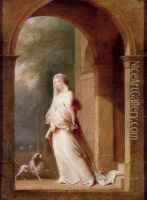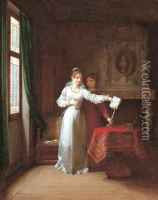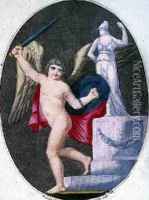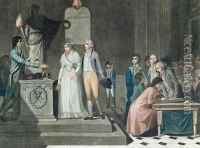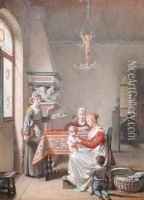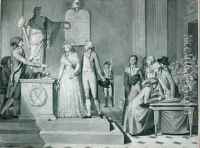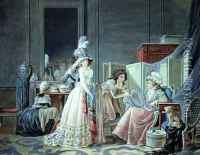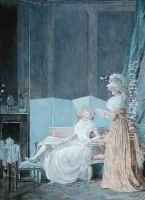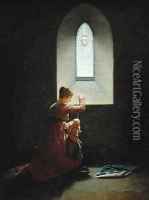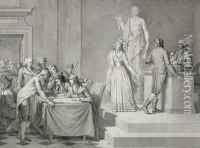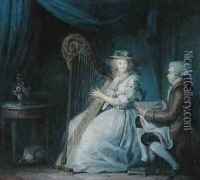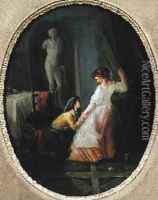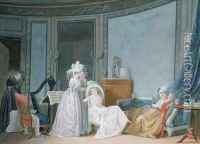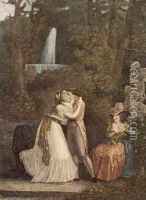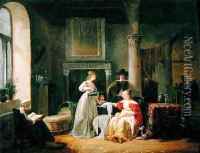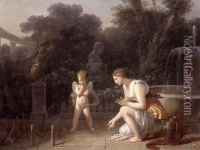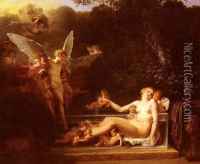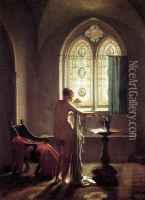Jean-Baptiste Mallet Paintings
Jean-Baptiste Mallet was a French painter born in Grasse in 1759. He was known for his delicate and intimate portraiture, genre scenes, and allegorical compositions. Mallet was trained in the classical tradition and was influenced by the Neoclassical movement that was prominent during his time, which is reflected in the clear lines and organized compositions found in his works.
Mallet moved to Paris to further his education and career in art. He became a student at the École Royale de Peinture et de Sculpture where he learned from established artists of the period. His style evolved over the years, incorporating elements of the Rococo revival that occurred towards the end of the 18th century. This is particularly evident in his use of pastel colors and the light, decorative quality of his paintings.
During the French Revolution, Mallet's career was somewhat disrupted, but he managed to continue working and adapting his artistic style to fit the changing tastes of the period. Following the Revolution, during the Napoleonic era and the Restoration period, Mallet received commissions that helped him maintain his status as a working artist.
Mallet's work was well received in his time, and he exhibited at the Paris Salon, the official art exhibition of the Académie des Beaux-Arts in Paris. Despite the popularity during his life, Mallet did not achieve lasting fame, and his works are less known today compared to those of his contemporaries. He died in Paris in 1835. His works can be found in various museums and collections around the world, providing a glimpse into the transitional period of French art from Neoclassicism to Romanticism.
